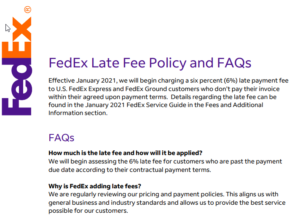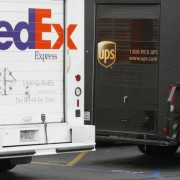Breaking: UPS Reinstates and Modifies its Guaranteed Service Refund Program
Last week we reported that UPS was going to finally reinstate its Money Back Guarantee program on April 5, 2021 for late deliveries, at least for some of their service offerings. Well UPS did in fact make that announcement on their website yesterday.
First and foremost, remember that effective March 26, 2020, UPS suspended its UPS Service Guarantee for all shipments from any origin to any destination as a result of the Covid-19 Pandemic. For all U.S. origin shipments, the Service Guarantee suspension actually became effective on March 24, 2020.
Now, effective April 5, 2021 the UPS Service Guarantee will be reinstated however ONLY for the following services. UPS Next Day Air services (UPS Next Day Air® Early, UPS Next Day Air® and UPS Next Day Air Saver®) and UPS Worldwide Express services (UPS Worldwide Express NA1®, UPS Worldwide Express Plus®, UPS Worldwide Express®, UPS Worldwide Express Saver®, UPS Worldwide Saver, UPS Worldwide Express Freight® Midday and UPS Worldwide Express Freight®).
In its announcement, UPS made the following provision changes and it’s a big one. “Until further notice, the guaranteed delivery time for UPS Next Day Air Saver® deliveries has been extended to end-of-day (11:59 p.m. on the guaranteed day of delivery). The Service Guarantee remains suspended for all other UPS shipments from any origin to any destination. Also, delivery times for UPS Next Day Air Saver® and UPS 2nd Day Air A.M.® services scheduled for delivery on or after March 30, 2020 will be extended to end-of-day (11:59 p.m. on the guaranteed day of delivery) until further notice.”
It’s important to note that while UPS extended the time its deliveries for these services will qualify as “on-time” did not reduce its fees for these services to compensate shippers for these extended delivery times.
It is not clear at this point at least, whether UPS will reinstate their service guarantees for their Ground Delivery Services, nor is it clear if FedEx will play “Follow the Leader” in reinstating it’s service guarantees, so stay tuned!
Want to make sure you are taking advantage of this reinstatement? Contact us today to learn more.







